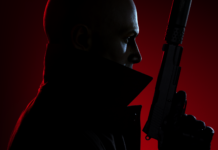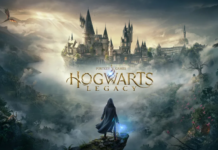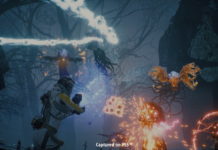Set
in a 2D fighting game world, Fullmetal Alchemist: Dual Sympathy plays a lot
like the Sega classic Streets of Rage. Those expecting an RPG might be
surprised by the news, but this revelation makes a few things clear: the game
is destined to be short, a little on the easy side, and has great potential
for repetition.
The latter is my first
concern, so let me get that out of the way by saying that, against all odds,
this game is not repetitive. It has a few annoying mini-games, but the core
combat is straight, action-packed goodness with an unexpected amount of
variety. Whereas Streets of Rage and Final Fight repeated the same levels,
enemies, and boss types from start to finish, Dual Sympathy ends each stage
with a cleverly designed boss whose weak points are not instantly apparent.

Fullmetal’s controls are
fast and reliable. Two of the face buttons are used for jumping and attacking.
Additional attacks are executed by tapping the touch screen, bringing the
total number of commands to four. Tap the center of the screen to bring up the
different powers you can draw upon to defeat your enemies: ice, fire, a
cannonball, etc. Only one of those may be selected and used at one time, but
the grave-like shields that Edward wields – those may be formed repeatedly at
any time.
Combos come in a couple
of flavors, and while that would normally lead to repetition, there isn’t time
for that to happen in Dual Sympathy. The levels are over almost as fast as
your attacks. Enemies hunt in small numbers – no more than three at a time –
and are not usually followed by more than a couple of replacements. Level
graphics are good for a game that’s being compared to the 16-bit Streets of
Rage, but the game doesn’t have as much visual depth as other 2D titles for
the DS (Castlevania, New Super Mario Bros., etc.).
Levels are mostly linear
– move from the left to the right. The few levels that aren’t linear either
have a touch screen puzzle that needs to be solved (very easy), or a game of
north/south, east/west that’ll remind you of the endless forest from The
Legend of Zelda. The touch screen puzzles typically ask you to draw a sphere.
Perfect stylus actions are not necessary. Simply scratch the screen until the
circle is full. A more precise mini-game is wood punching. Grab the wood and
guide it to the tree stump before the jock wannabe takes his swing. If you
don’t place the piece of wood on the stump in time, he’ll punch the stump
instead and hurt his hand.

Many areas require that
all enemies be destroyed before you can move forward. Once accomplished, a
square gray box appears – the word "Go!" and an arrow pointing right are
inside. Today’s gamers don’t need to be told the obvious, but I doubt that’s
why the developers added it. Since the game borrows so much from Streets of
Rage, I think they wanted Dual Sympathy to be as close to an arcade brawler as
possible. That gray box, as unnecessary as it may be, is another way the game
will take you back to the golden days of gaming.
Enemies are big and look
fearsome, but don’t have the attack power to back up their appearance, nor the
health meter to withstand your retaliation. You’ll encounter a handful of
monsters that seem to have come from the cat family – if that family had been
dropped in a vat of ooze and mutated into something gruesome. They lunge for
sneak attacks, but you can repel their actions by forming shields. Your
attacks can go through the shields, but theirs cannot.
The shield is also
effective against boss battles, the best and most interesting part of the
game. Bosses often appear to be invulnerable to your attacks. After having a
moment of, "Oh no!" and "How am I going to defeat this guy!?", you’ll realize
that each of the impenetrable forces are weakened by something in your
arsenal. The weakness is usually linked to your shield. When used at special
times, the shield may freeze and/or weaken the enemy, opening him up for
attack. I don’t want to go into too much detail – the satisfaction of
defeating these bosses will be lost if you know how to win ahead of time. But
if you want the best excuse to play Dual Sympathy, this is it.

Dual Annoyances,
Triply Short, and a Story
It’s a good thing the
mini-games are over quickly, because they’re not innovative or entertaining. I
appreciate that developers are at least willing to try and include some
DS-specific features in their games. But when those features are tiring and
have been done a million times before, the word "gimmick" is all that comes to
mind.
This game is very, very
short – a couple hours and you’re done. Bonus touch screen mini-games can be
unlocked, along with artwork and sound bytes. Unless you’re a diehard
Fullmetal Alchemist fan, these extras aren’t too exciting. The music is great,
and I was very surprised by the story. It has made me want to start watching
the show again. Voice-overs are brief, but the few moments where you get to
hear the characters speak are really good. The sound quality isn’t that great
(there’s a bit of static). But the voice-overs themselves – most likely taken
from the show – are top-notch.

The majority of the story
sequences are presented with still images and text. I wasn’t in a big hurry to
read along, but was hooked as soon as I started. The only drawback to the
story is that it comes too quickly. You’ll read for a minute or two, play for a
couple of minutes, then go back to reading again. It would’ve been much better
to space them out, or extended the length of each stage. That would’ve risked
repetition – which this game avoids partially by being so short, and partially
by providing boss battles with real depth and strategic value. But even
diehard fans may get annoyed by the frequent interruptions, especially if they
already know the story that’s being told.
|
|
Gameplay: 7
Streets of Rage
gone Fullmetal. Dual Sympathy is fast, over-before-you-know brawler with cool
special attacks, inventive boss battles, and a story you won’t want to skip.
Graphics: 6
Two-dimensional
goodies that are showing their age. Back on the Genesis and SNES, Dual
Sympathy would’ve been one of the best-looking titles. But the DS has a lot of
extra power that could be used to make 2D games look better (with or without
polygons). I like the game’s retro look, but I could’ve liked it a lot more.
Sound: 8.5
Great, memorable
music and high-quality voice-overs that are only hurt by a slight bit of
static.
Difficulty: Easy
The “hard” mode
is unlocked after completing the game, but the standard difficulty is very
easy.
Concept: 7
Great bosses –
terrible touch screen mini-games. Dual Sympathy is creative in its enemy
scenarios, but the mini-games are too gimmicky for their own good.
Overall: 7
I give this game
a 7 with caution: Dual Sympathy is action-packed entertainment. The bosses are
great and the story is wonderful. But you may only feel the need to play
through this game twice, and it’ll barely take two hours on the first – much
less on the second. With that in mind, know that this is a good game, but
don’t buy it if length means anything to you.









